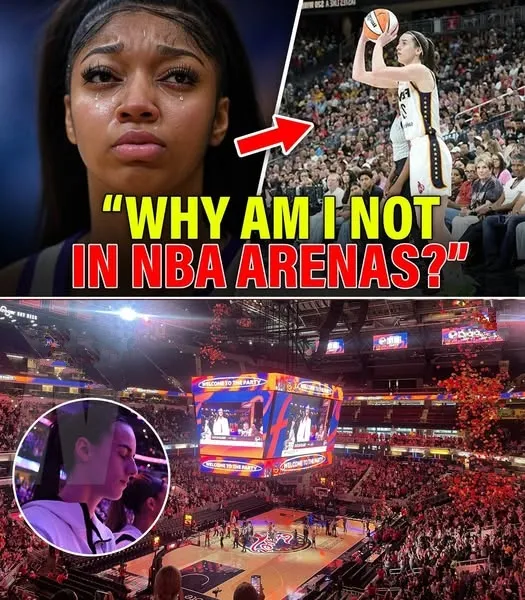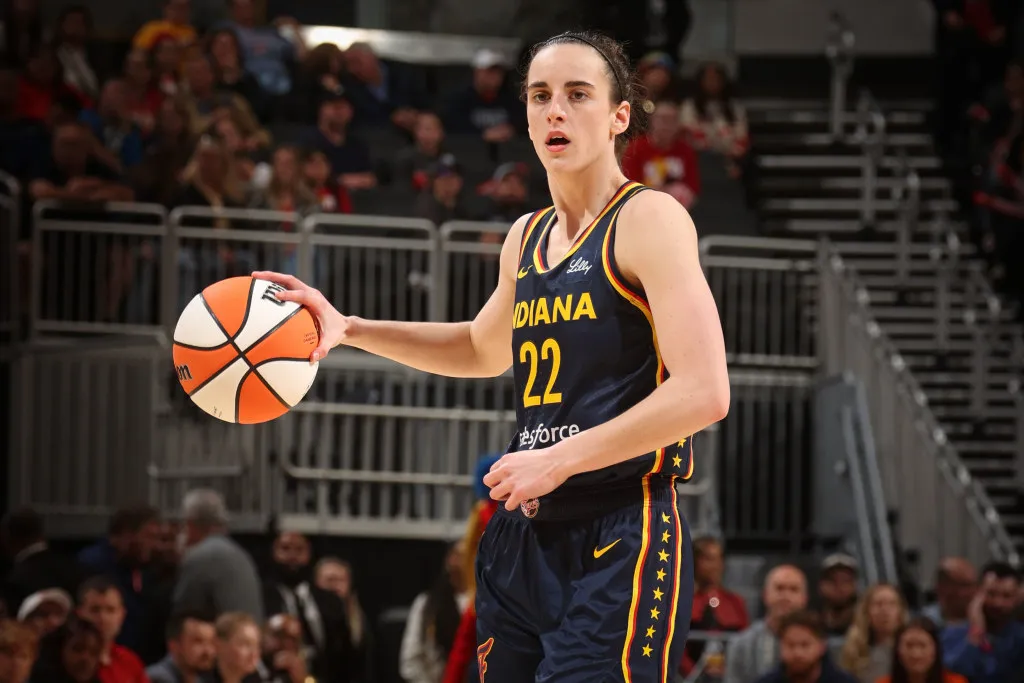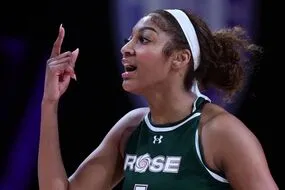Caitlin Clark of the WNBA Indiana Fever isn’t just making waves—she’s flooding the league. Entire WNBA franchises are straight-up evacuating their home courts like someone pulled a fire alarm labeled “Caitlin’s Coming.” Somewhere out there, Angel Reese of the WNBA Chicago Sky is doom-scrolling, wondering why her name’s not plastered on these mega-billboards.

The moment Caitlin Clark declared for the WNBA Draft, fans and analysts alike predicted she would be a game-changer. However, what’s happening now is beyond what anyone imagined. Clark’s presence isn’t just boosting ticket sales; it’s forcing teams to move entire games to NBA arenas. This level of demand hasn’t been seen in the WNBA in decades, if ever. And while this is a historic moment for women’s basketball, it has also sparked an undeniable wave of jealousy and frustration—most notably from her rival, Angel Reese.

Caitlin Clark’s Impact: Selling Out Arenas Like an NBA Superstar
Clark’s arrival in the WNBA has been nothing short of electric. She was already a sensation at the University of Iowa, breaking records and capturing the hearts of basketball fans across the country. Now, as a rookie, she’s single-handedly elevating the Fever’s profile and, by extension, the entire league.

When the Indiana Fever’s schedule was released, it became clear that every game featuring Caitlin Clark would be an event. But no one expected the overwhelming demand to be this extreme. Multiple teams have had to relocate their games to larger venues to accommodate the sheer volume of fans wanting to witness Clark in action.
For example, the Indiana Fever’s matchup against the Chicago Sky was initially set to be played at Wintrust Arena, which holds around 10,000 spectators. However, due to massive ticket demand, the game was moved to the United Center, the home of the Chicago Bulls, which boasts a capacity of nearly 21,000. Similar moves have happened across the league, proving that Clark’s star power is undeniable.
Angel Reese’s Silent Frustration: Where’s Her Star Treatment?
While Clark’s transition to the WNBA has been met with an outpouring of support, Angel Reese’s journey has been different. The former LSU star, known for her dominant presence and unapologetic confidence, was also one of the most highly anticipated rookies in the league. Yet, her games haven’t been met with the same level of excitement or demand.
Reese is no stranger to controversy. Her rivalry with Clark, which dates back to their college days, has been one of the most talked-about storylines in women’s basketball. However, while their rivalry boosted viewership in the NCAA, the WNBA seems to be favoring one side. Clark’s games are selling out NBA arenas, while Reese’s games, though well-attended, haven’t seen the same drastic shifts in demand.
It’s hard to ignore the stark contrast. While Clark’s games are moved to NBA-sized venues, Reese’s games remain in standard WNBA arenas. This discrepancy has led to speculation: Is it simply Clark’s playing style and marketability? Or is there a bias at play?
The Business Behind Caitlin Clark Mania
The truth is, Caitlin Clark is an advertiser’s dream. She has a polished image, a jaw-dropping three-point shot, and an underdog charm that resonates with fans across demographics. Her presence has been a revenue jackpot for the WNBA, bringing in new sponsors, higher television ratings, and a level of excitement the league desperately needed.
From a marketing perspective, the decision to move Clark’s games to bigger arenas makes perfect sense. The demand is there, and the league is capitalizing on the buzz. The more seats filled, the more money made—not just for Clark’s team, but for the entire WNBA.
But where does that leave players like Angel Reese? Reese has built a strong personal brand, fueled by her fiery competitiveness and willingness to speak her mind. However, her popularity isn’t translating to ticket sales the way Clark’s is. This imbalance highlights the challenges the WNBA faces when trying to market multiple stars at the same time.
What This Means for the Future of the WNBA
Clark’s rapid rise is forcing the WNBA to rethink its marketing strategies. If one player can generate this much excitement, what does that say about the league’s potential? The fact that teams are moving games to NBA arenas proves that the demand for women’s basketball is real and growing. But it also raises a crucial question: How can the league ensure that all of its stars—not just Clark—benefit from this newfound attention?
For Angel Reese, this may be an opportunity to reshape her narrative. Instead of feeling overshadowed, she can use this as fuel to elevate her own brand. After all, rivalries drive sports. The Clark-Reese dynamic has already captured the public’s imagination once—there’s no reason it can’t happen again on a bigger stage.
There’s no denying that Caitlin Clark is the biggest story in the WNBA right now. The fact that entire franchises are moving games just to accommodate her growing fanbase is proof of her superstar status. Angel Reese, meanwhile, finds herself in an interesting position—watching from the sidelines as her biggest rival dominates the headlines.
But sports are unpredictable, and narratives can shift quickly. If Reese can channel this moment into motivation, we might see the rivalry take on a new life in the WNBA. Until then, one thing is clear: Right now, it’s Caitlin Clark’s world, and everyone else is just trying to keep up.